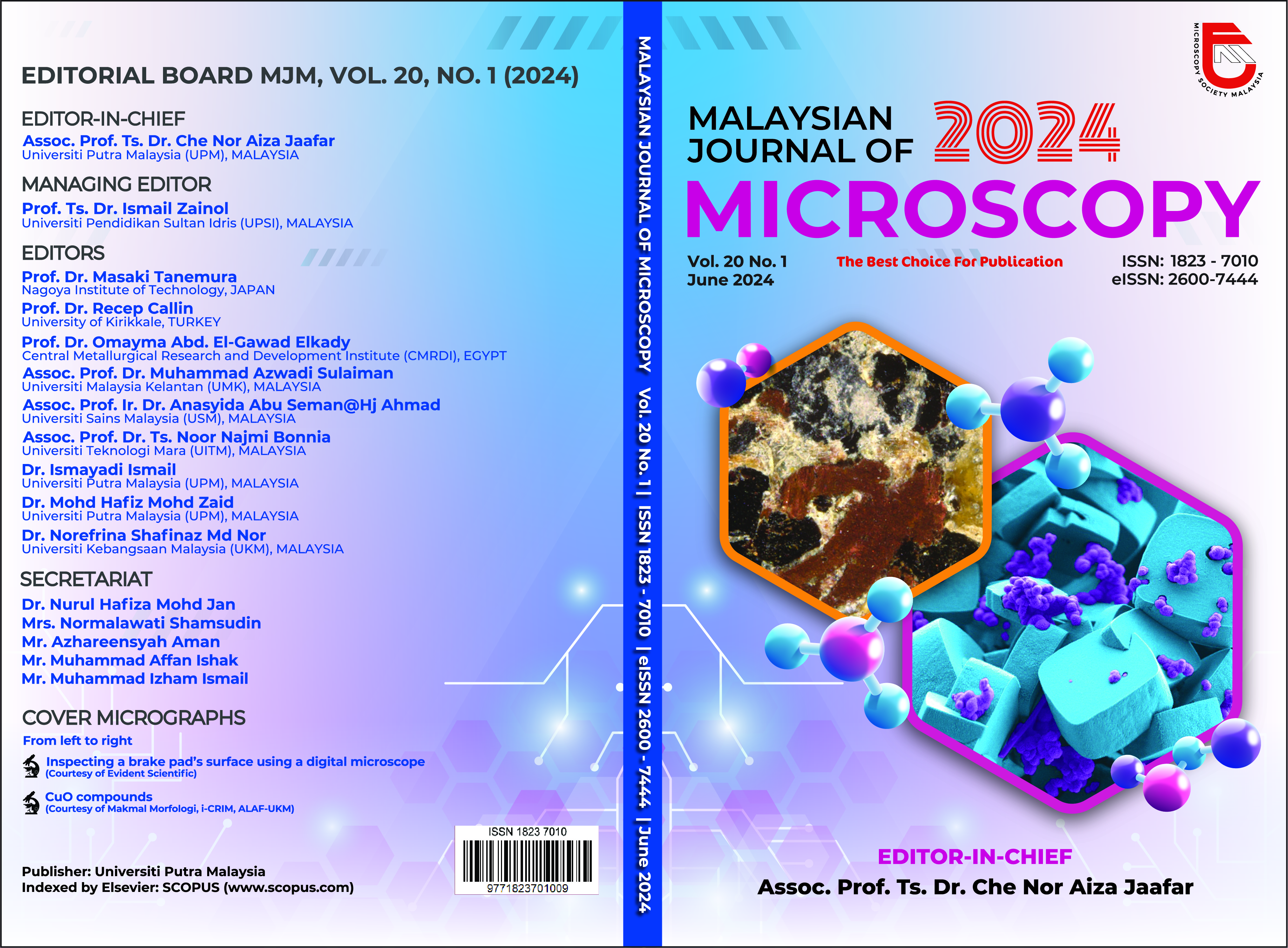SYNTHESIS AND CHARACTERISATIONS OF IRON-DOPED AKERMANITE CERAMIC BY SOL-GEL METHOD
Abstract
Calcium silicate-based (CaSi) ceramics have been reported to be an alternative material to the well-known calcium phosphate (CaP) groups for bone repair treatment. Among the CaSi-based ceramics, akermanite (Akr: Ca2MgSi2O7) is distinctive with its controlled biodegradation rate, mechanical properties and outstanding osteoconductivity, reportedly due to the release of Si, Ca, and Mg when in contact with the biological environment. To produce a series of iron-doped akermanite microsphere bioceramics as a potential material for bone applications. According to Goldschmidt’s Rules of Substitution, the smaller trivalent ions of Fe3+ were hypothesised to substitute into the larger Mg2+ sites in the host structure of akermanite. Subsequently, Ca2Mg1-xFexSi2O7 (with x= 0.6, 0.9, and 1.2 mol%) powders were synthesised by sol-gel route and then calcined at 1300°C. X-ray diffraction patterns showed akermanite phase did not change despite the Fe3+ substitution into the host structure, i.e., akermanite was detected as the primary phase with diopside and merwinite as the minor phases. Fourier transform infrared spectra also demonstrated that the silicate remained unchanged, which could be attributed to the structural stability with dopant concentration. The elemental analysis proved that Fe3+ has been successfully substituted into the host structure with varying trivalent ion concentrations. However, none of the compositions exhibited microsphere formation; they created agglomerated particles with irregular shapes. All the as-synthesised Fe-doped Akr powders were determined to be bioactive, as shown by the apatite formation when immersed in the simulated body fluid (SBF). This occurred as early as seven days with 0.9 mol% Fe3+ revealing needle-like apatite covering most of the surface of the akermanite.


